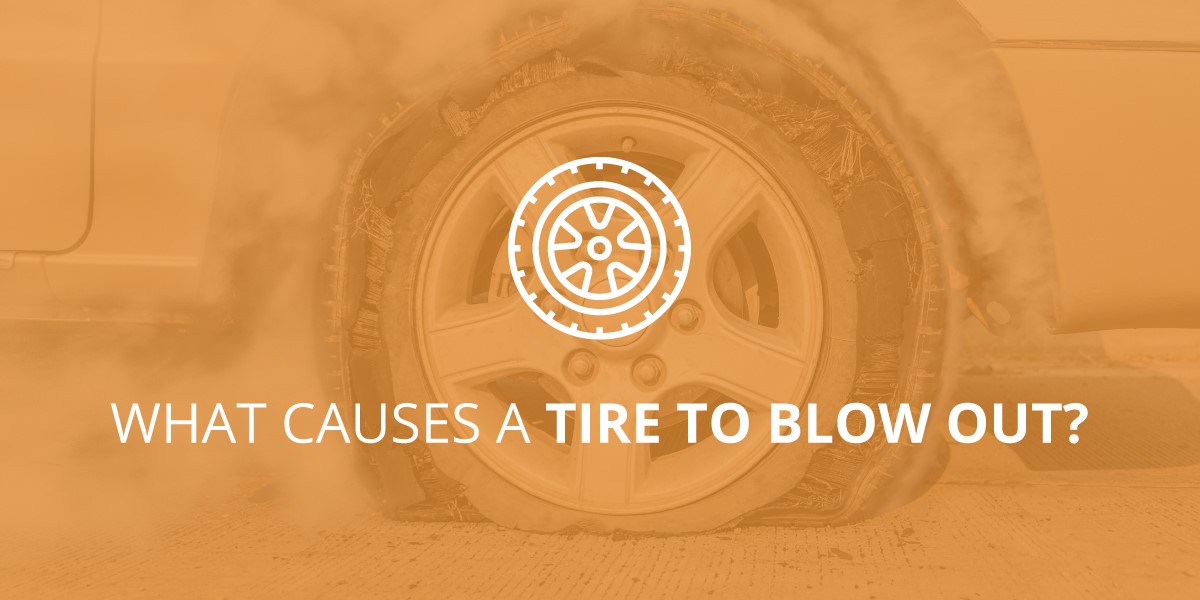We have all seen curved pieces of black rubber beside the highway. Evidence that a car or truck’s tire failed. Tire blowouts are all too common, and if one happens to you, it can lead to a crash. To avoid this common cause of single-vehicle incidents and collisions, you need to understand why tire blowouts happen and how to deal with it when it does.
What Is a Tire Blowout?
A tire blowout is not a regular flat tire. It is not a situation in which a tire gradually loses air pressure—though this can lead to a blowout. Instead, tire blowouts are a sudden bursting of the tire followed by an immediate drop in pressure.
Common Causes of Tire Blowouts
The most common cause of a tire blowout is when a tire has too little air pressure. This enables the tire to flex beyond its elastic limits, leading to the tire overheating, and causing the rubber to come away from the internal components of the tire and fail.
Overloading a vehicle is a problem, particularly on old and underinflated tires. When packing your car, you need to consider how much weight you are putting on your tires, the age and condition of your tires, tire pressure, and the length and speed of your drive. A lengthy drive with a trunk full of paving stones for the garden could lead to a tire blowout.
Another common cause is potholes, curbs, driveway lips, and other road hazards. If one or more tires collides with an object with enough force, it can damage the internal components of the tire. The tire can blow immediately, or the damage will take its toll over the next few weeks or months.
You also need to be on the lookout for irregular wear on your tires. Vehicle misalignment or worn suspension components can cause a tire to wear unevenly across its surface. The tire is then particularly weak in certain areas and more susceptible to failure.
Other Common Causes of Tire Blowouts
Another possible cause of a tire blowout is a defect. In some cases, a tire has a manufacturing or maintenance defect that causes it to fail.
Possible defects include:
- Faulty and weak materials
- Tread separation
- Lack of bond between treat and steel belt
- Lack of separation prevention design elements
- Lack of necessary components
- Negligent puncture repairs
- Negligent retread
How to Know When Your Tire Blows Out
If one of your tires fails, you will hear it and feel it. Your vehicle may suddenly start to slow down and pull significantly to one side. Most tire blowouts cause a loud noise—a bang! You may then hear an odd repetitive noise as you drive on a flat tire.
How to Drive Through a Tire Blowout
When a tire blows out, many driver’s first instinct is to slam on the brakes and swerve. However, this can be dangerous, particularly in heavy traffic.
Instead, maintain acceleration or press the accelerator briefly to keep your vehicle’s forward momentum, according to I Drive Safely. You may need to turn the wheel slightly in the opposite direction the vehicle is pulling to continue moving forward and not angling into other lanes of traffic. This should be a gentle maneuver and not a sharp tug of the wheel.
Then begin to move toward the shoulder of the road or turn onto a quiet side street. When you are pulled over, turn on your hazard lights.
This advice is relevant for vehicles of all sizes and moving at all speeds. Always drive through a tire blowout so you can come safely to a stop and avoid a collision.
What Else You Need to Know
Tire blowouts are more likely to happen in the hot summer months. They can happen at any time, but the hot air and pavement will cause the tires to overheat faster. Other factors are that motorists are often driving long distances in the summer for vacations and outings, and they have more packed into their vehicles.
You also can look up tire pressure on the tire manufacturer’s website, which can give you the ideal pressure and information on when the tire will be considered underinflated.
You need to know your tires’ proper air pressure. It should be located on the driver’s side door jamb. If you plan to drive a long distance, check your tire pressure yourself before hitting the road.
If you need to carry a heavy load, fill your tire to the maximum pressure allowed. This information can be found on the tire’s sidewall or the tiremaker’s website.
Were You in a Tire Blowout Accident?
If you were injured in an accident caused by another person’s tire blowout, Call at (214) 217-0277 or contact an experienced auto accident lawyer at Brooker Law, PLLC.
